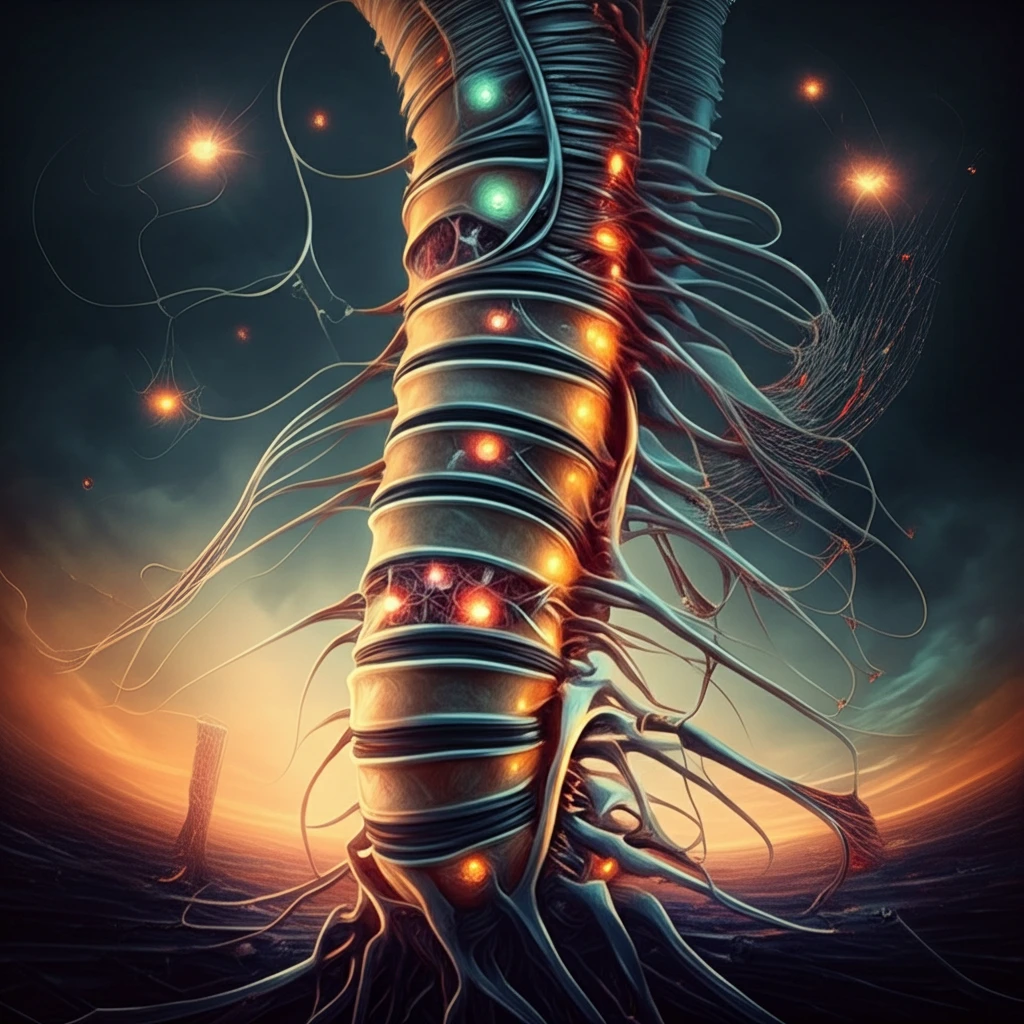
Decoding Movement: How Scientists Unlocked the Secrets of Locomotion
"A groundbreaking 1987 study illuminated the spinal cord's role in generating movement, paving the way for understanding neurological disorders."
Have you ever stopped to consider the sheer complexity of something as seemingly simple as walking? Locomotion, the act of moving from one place to another, is a fundamental aspect of our lives. It's so ingrained in our daily routines that we rarely think about the intricate mechanisms that make it possible. But behind every step, jump, or dance move lies a sophisticated network of neural circuits, orchestrated by the spinal cord and modulated by signals from the brain and periphery.
For decades, scientists have been working to unravel the mysteries of locomotion, seeking to understand how the body coordinates muscle movements to produce purposeful motion. A significant breakthrough came in 1987, when James Buchanan and Sten Grillner published a seminal paper that provided the first clear evidence for excitatory spinal neurons. Their research illuminated how these neurons receive inputs from descending commands and sensory afferents, synapsing onto motoneurons and commissural inhibitory interneurons. This discovery established a foundational circuit model for central pattern generators (CPGs), highlighting the critical role of excitatory interneurons in rhythm production.
This article explores the profound impact of Buchanan and Grillner's work, examining how it reshaped our understanding of locomotion and laid the groundwork for future research in neuroscience. We'll delve into the key findings of their study, explore the controversies and debates that shaped the field, and discuss the ongoing efforts to further unravel the complexities of movement.
The Central Pattern Generator: Unlocking the Code of Movement

At the heart of locomotion lies the central pattern generator (CPG), a network of neurons within the spinal cord capable of producing rhythmic, coordinated patterns of activity. These patterns drive the alternating muscle contractions that propel us forward, whether we're walking, running, or swimming. The concept of CPGs emerged from decades of research and debate, with scientists initially divided on the primary source of rhythmic motor control. Some argued that sensory feedback from the periphery was essential for generating movement, while others championed the idea of a central, spinal-cord-based generator.
- Excitatory Interneurons: Amplify and sustain the rhythmic activity within the CPG, driving motoneurons to produce muscle contractions.
- Inhibitory Interneurons: Help shape the rhythm and coordinate the timing of muscle activation, ensuring smooth, alternating movements.
- Sensory Afferents: Provide feedback about the body's position and the external environment, allowing the CPG to adjust motor patterns in response to changing conditions.
- Descending Pathways: Transmit commands from the brain to initiate, modify, and terminate locomotor activity.
The Enduring Legacy: From Lampreys to New Therapies
Buchanan and Grillner's 1987 paper stands as a cornerstone in the field of motor control, providing a framework for understanding the intricate neural circuits that govern locomotion. Their work not only advanced our knowledge of spinal cord function but also paved the way for future research on neurological disorders affecting movement. By elucidating the roles of excitatory and inhibitory interneurons in rhythm generation, they opened up new avenues for developing therapies to restore motor function in individuals with spinal cord injuries, stroke, and other debilitating conditions.
